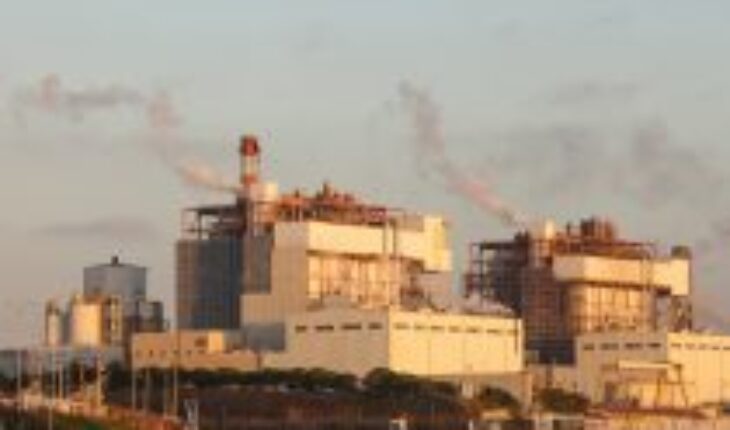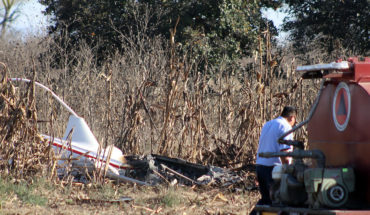The Ventanas smelter has a long history of reporting pollution episodes, amid repeated situations of environmental damage that have affected the Quintero-Puchuncaví area, in the Valparaíso Region.
It belongs to the Copper Corporation (Codelco) and was founded in 1964. It is located in an industrial pole where four coal-fired thermoelectric plants and crude and copper refineries are built. In total there are 19 polluting industries considered dangerous.
Initially it belonged to the National Mining Company (Enami), but in 2003 it passed to Codelco. It is one of seven existing smelters in the country and has generated losses since 2009.
You may also be interested in:
Since 1990, several decrees were issued to measure and sanction emissions, without success. To this is added that Chilean regulations are much more lax than those of the World Health Organization (WHO). For example, in the case of particulate matter (MP10), Chile allows 150, but the WHO only 50.
“The first protests and diagnoses about the very serious reality that was happening in the bay occurred in the late 70s and early 80s. From that moment on, the pollution processes that the bay was suffering begin to become evident, mainly due to the historical operations that since the sixties had been polluting the place, “explains Matías Asun, the national director of Greenpeace.
Additionally, the Law on General Bases of the Environment began to take effect years after the companies arrived at the place, for this reason the companies present in the place were not audited for a long period.
“There are the companies that have never been environmentally evaluated and, in the case of the Codelco foundry, it was never evaluated because the Environmental Law did not exist and began operating in 1997,” says Flavia Liberona, executive director of Terram Foundation.
Source: Terram
Pollution episodes
The episodes of pollution have been multiple. The last one occurred on June 9 and affected 115 people, most of them schoolchildren, and forced the closure of educational centers.
Previously, in 2018, due to a serious episode of contamination, about 600 people from Quintero and Puchuncaví went to medical centers with an atypical clinical picture, such as vomiting blood, headaches, dizziness, paralysis of the limbs, in addition to strange hives on the skin of infants.
In total, between August and September 2018, there were at least three episodes of this type. As a result, the environmental organization Greenpeace described this area as the “Chilean Chernobyl”. Among the criticisms was that the Monitoring Network was from Codelco, which raised doubts about its reliability.
In another episode, in 2011, sulfur contamination affected La Greda school and left 31 children intoxicated, with symptoms such as itchy eyes, vomiting and disorientation. It was located just 500 meters from the foundry and the Government of the time announced its closure.
All these episodes occurred after years of scientific studies, decrees and decontamination plans.
“Perhaps the worst episodes of pollution that have marked the history of the place are concentrated in 2011, with the crisis that followed the conflicts in (the school) La Greda and the offer of the minister of the time, (Jaime) Mañalich, to have suspended the operations of the smelter, but that finally never materialized. Then also, during that same time, under the first government of Michelle Bachelet, in recent days, the news that was discovered by Wikileaks and that was the illegal approval, against all regulations, of the Campiche thermoelectric plant, “says the national director of Greenpeace.
The pollution episodes continued to this day, which mobilized the residents of the area and environmental organizations.
“After multiple environmental crises, the emergence of a local resistance that never remained silent, perhaps the most important thing is to remember the year 2016, with the oil spills and spills that have continued practically one per year from that moment onwards; the year 2018, in which scandals and poisonings finally occur and we see this real scandal, where the industries threw the ball among themselves, without taking charge, which ended with a historic ruling of the Supreme Court recognizing that human rights were violated and in which the Office of the Ombudsman for Children participated, the National Institute of Human Rights and several middle organizationsenvironmental and resistance in the area. That marks a very significant turning point,” Adds Asun.
Problems since the 60s
The problems of the industries in the area are long-standing. Already in 1968, the Ministry of Agriculture officiated to the Enami for damages to the farmers of the area. In the middle of the dictatorship, in 1977, an increase in the height of the chimney of the foundry was made as an environmental measure.
But the problems persisted. In 1979, neighbors contacted the late university professor Jaime Chiang Acosta, who produced the first studies on arsenic contamination in the area. In 1985, the academic carried out the first of them, entitled “Determination of heavy metals in atmospheric sediment in the Puchuncaví-Quintero area”.
After the return of democracy in 1990, the smelter recognized pollution problems in its production. That year the Puchuncaví Environmental Defense Committee was created.
Source: Terram
Regulation of emanations
In 1991, through Supreme Decree 185 of the Ministry of Mining, directed at that time by the late Juan Hamilton, the emanations of sulfurous anhydride, particulate matter and arsenic were regulated, which included plants such as Ventanas.
There, standards for the concentration of particulate matter in the air were established, among others, it was forced to keep a record of emissions and to request an evaluation from the local Health Service. Sanctions were also set.
In its article 4, it even explicitly stated that “the Empresa Nacional de Minería y Chilgener S.A., must install a permanent air quality monitoring network in the area surrounding the Ventanas Industrial Complex, 30 days after the publication of this Decree and present a Decontamination Plan before July 31, 1992.”
Also, the same year, the government and companies presented the Windows Environmental Program (PAV) and proposed a Decontamination Plan. In 1992, a Monitoring Network was inaugurated, and a year later, by decree, the Plan was published.
At other times, the state’s action was erratic. This is indicated in the document “The negligent reality of the Bay of Quintero” of Terram Foundation, of 2018.
For example, although in 1994 through the D.S. No. 477/1994 of the Ministry of Health a primary air quality standard for arsenic was established, this was repealed through the D.S. No. 1,364 of the same year, of the same Secretary of State just months after being promulgated, “with the incomprehensible argument that given the importance of the arsenic standard, it was necessary to wait for the issuance of the regulation that would regulate the specific procedure for the elaboration of primary and secondary environmental quality standards, which was promulgated in 1995”.
“Since the issuance of the respective regulation, 23 years have passed without there still being a primary quality standard for arsenic,” he says.
Few effects
In fact, the measures had no effect. In 1994, the Ministry of Agriculture declared the area surrounding the Ventanas industrial complex to be “saturated by sulphur dioxide and particulate matter”.
In 1997 the first regulation of the Environmental Impact Assessment System (RSEIA) was approved, but until 2018 none of the companies in the area had been environmentally evaluated in their main operation, since the standard was not retroactive.
An example of this occurred in 2016, when the Environmental Service (SMA) proceeded to file charges against Codelco, owner of the Ventanas Smelter and Refinery, after detecting 13 environmental breaches.
However, as this industrial facility dates from 1964, only the modifications or extensions that have been made to the project after 1997 (11 Resolutions of Environmental Qualification through DIA) were subject to inspection, leaving other processes outside the framework of action of the SMA.
Contaminated seafood
The contamination reached such a degree that in 2000, the health authority prohibited the sale and cultivation of mollusks to fishermen of Ventanas for high levels of cadmium, arsenic and copper.
In order to reduce polluting emissions, in 2013 the refinery closed its Noble Metals Plant that produced electrolytic gold and silver, reducing its atmospheric emissions by 33%. But it wasn’t enough.
In 2015, the site was declared a saturated zone of particulate matter (MP) 25 and latent in MP10, by a decree of the Ministry of the Environment.
The standard’s failure to achieve its goals was evident, but an iconic example was missing. And it happened in 2016.
That year, the Council of Ministers for Sustainability approved an Air Prevention and Decontamination Plan (PPDA) for the communes of Concón, Quintero and Puchuncaví. However, it was rejected by the Office of the Comptroller General of thea Republic in 2017, “for not complying with the law”.
Closing Windows
In relation to the latest announcements of Codelco and the Government, Flavia Liberona recalls that on several occasions there had already been signs of the closure of the Windows Function, because it is the plant that pollutes the most in the area.
“In 2011 there was a contamination in the La Greda school and Codelco went to show signs of good behavior, because they also had some degree of responsibility at that time and then in the contaminations of 2018. So, especially when there is a peak of sulfur dioxide, smelting is syndicated as one of the main culprits. If you look at all the official data that are in the national inventory of emissions, sulfur dioxide emissions are mainly from the smelter and thermoelectric plants, but mostly from the smelter,” says Liberona.
In that sense, the executive director of Terram Foundation, said that Codelco’s decision is “a brave and successful measure”, but that it is important to understand that it is a change that will take several years.
“The government and the board have presented a plan for the closure of Ventanas. It is not that the smelter goes out tomorrow, it is a plan that requires the approval of a law after a registration of the Sernageomin and has several steps. It is more or less stipulated that within five years the furnaces could have been shut down and the smelter dismantled. In addition to this, they have said that new smelters are going to be built and I think they should also announce a plan for the construction of new Codelco copper smelters,” concludes Liberona.
Follow us on





